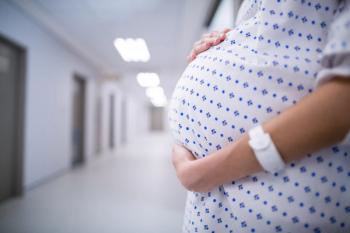
Preventing neonatal pertussis through maternal immunization
Strategies used by obstetricians to prevent perinatal infections have changed over time.
Key Points
Strategies used by obstetricians to prevent perinatal infections have changed over time. Recognition that maternal infections such as syphilis and rubella can cause fetal and neonatal disease has prompted improvements in treatment with appropriate antibiotics and maternal vaccination, which, in turn, has led to improvements in perinatal outcomes.
For many infections, such as the 2009 novel H1N1 influenza outbreak, it is primarily the threat of maternal disease that prompts maternal immunization. But recent studies suggest that maternal vaccination often protects not only the mother from severe disease, but also her fetus and newborn through transplacental transmission of protective antibodies and by providing disease protection to caregivers,1 a concept known as an immunologic cocoon: If the infant's caregivers are free from a disease such as influenza, the likelihood of the infant contracting that disease is greatly lessened.
Pertussis or "whooping cough" is a highly contagious, primarily pediatric, bacterial infection caused by Bordetella pertussis, a gram-negative coccobacillis.
Among the states that experienced a significant increase in confirmed or suspected cases of pertussis in 2010, California reported 8,383 cases of pertussis, with the majority occurring in infants, 10 of whom died.5
Protection of mothers, family members, and other caregivers from pertussis is paramount to preventing infection in infants and newborns. One study found that when a source for infant pertussis infection could be identified, 32% of the infections were acquired from the infant's mother and 43% were acquired from another family member.6
Clinical course and treatment
B. pertussis causes disease through the elaboration of toxins that damage respiratory epithelium. Pertussis is transmitted by respiratory droplets and is highly contagious, with an attack rate of 80% to 90%.7 The incubation period for pertussis is approximately 7 to 10 days.8
Pertussis infections have 3 clinical stages. The catarrhal stage lasts from 1 to 2 weeks and presents with conjunctivitis, sneezing, watery nasal discharge, and cough. The paroxysmal stage can last from 4 to 6 weeks and consists of episodes of coughing, often severe enough to be associated with incontinence or vomiting. Posttussive vomiting is considered a hallmark symptom of this stage. Finally, a convalescent stage lasts for approximately 6 weeks. During the catarrhal and paroxysmal phases, patients are highly contagious. The nonspecific signs of pertussis, especially in the early stages, can cause the disease to be easily confused with other upper respiratory diseases, hindering recognition and delaying appropriate treatment.
A diagnosis of pertussis is made through laboratory tests requiring nasopharyngeal samples for either culture, direct fluorescent antibody staining, or polymerase chain reaction techniques. The sensitivity of laboratory detection methods decreases with the duration of symptoms and with previous antibiotic exposure.7,8
Macrolide antibiotics (ie, erythromycin, azithromycin, and clarithromycin) are the preferred antimicrobial agents for postexposure prophylaxis and treatment of pertussis.9 Azithromycin 500 mg orally on day 1, followed by 250 mg on days 2 through 5, or trimethoprim-sulfamethoxazole (TMP-SMX) twice daily for 14 days is recommended for either treatment or prophylaxis in adults. Azithromycin, in particular, is recommended for ease of use and tolerability.
In newborns and young children, pertussis carries significant morbidity and mortality. The highest rate of hospitalization and death from pertussis is in children younger than 6 months of age: 91% of pertussis-associated deaths occur in this age group.2 In adults, up to 5% of patients may develop pneumonia, 4% may experience rib fractures from coughing, and approximately 3% of patients in all adolescent and adult age groups may require hospitalization.8,10
Newsletter
Get the latest clinical updates, case studies, and expert commentary in obstetric and gynecologic care. Sign up now to stay informed.









